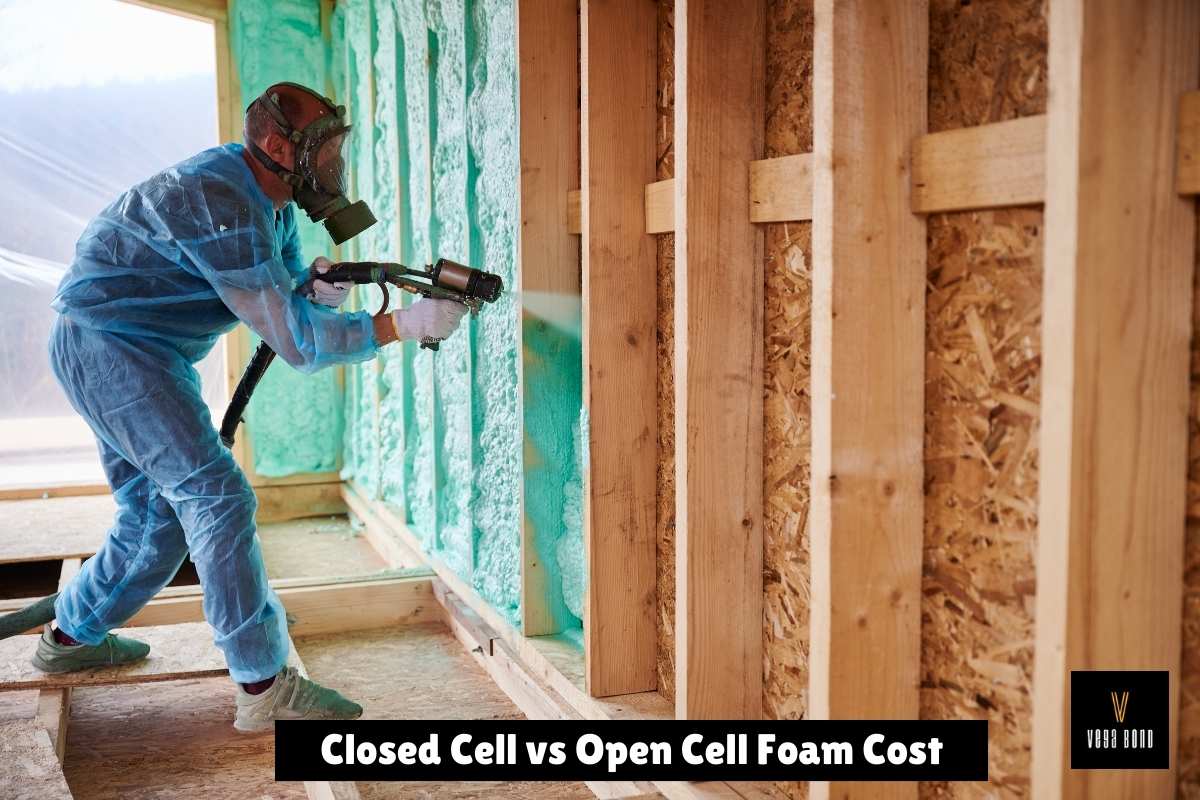Closed Cell vs Open Cell Foam Cost: Price Comparison 2024
Ever wonder why some homeowners love spray foam insulation, and others don't? It's all about understanding the cost and benefits of closed Cell vs. open cell foam. This comparison will show you why picking the right type is key to your budget.
Foam insulation has changed the game for home energy efficiency. Yet, the debate over the cost of closed Cell vs. open cell foam still confuses many. Knowing the difference can save you money and make your home more comfortable, whether you're updating an old house or building a new one.
We'll simplify the foam insulation cost comparison to guide you in your choice. We'll look at the price, performance, and long-term value of both types. By the end, you'll know how to pick the best foam insulation for your needs and budget.
Key Takeaways
- Closed cell foam costs more but has a higher R-value per inch
- Open cell foam is cheaper and great for soundproofing
- Long-term energy savings can pay for the insulation costs
- Climate and project details affect the best foam insulation choice
- Getting professionals to install it is key to the best results
Understanding Foam Insulation Types
Foam insulation comes in two main types: closed Cell and open Cell. Knowing the difference between them can help you choose the best foam for your needs.
What is Closed Cell Foam?
Closed cell foam is a dense insulation material. Its cells are packed tightly, making a solid barrier. This structure makes it great at insulating and keeping moisture out.
What is Open Cell Foam?
Open-cell foam feels softer and spongier. Its cells aren't fully closed, so air can move through them. This makes it lighter and more flexible but less effective at fighting moisture.

Key Differences Between Closed and Open Cell Foam
When we compare closed Cell vs open cell foam, several key differences stand out. Let's explore these differences:
| Feature | Closed Cell Foam | Open Cell Foam |
|---|---|---|
| Density | High (2 lb/ft³) | Low (0.5 lb/ft³) |
| R-value per inch | 6.0 - 7.0 | 3.6 - 3.8 |
| Moisture resistance | Excellent | Poor |
| Air barrier | Yes | No |
| Sound dampening | Good | Excellent |
These differences show how each foam type performs and how it costs. Closed cell foam is better at insulation and keeping moisture out. Open cell foam is great for reducing sound and being flexible.
Factors Affecting Foam Insulation Costs
Foam insulation costs vary depending on several important factors. The type of foam used plays a big part in the price. Closed-cell foam is pricier than open-cell foam because it's denser and has a higher R-value.
The size of the project also affects the cost. Bigger areas need more materials and work, making the cost per square foot go up. Using a spray foam cost calculator can help figure out the cost for different sizes of projects.
How hard it is to install the foam is another big factor. If the area is hard to reach or has tricky spaces, it might cost more for labor. Where you live can also change the price because of different costs for materials and labor.
Prices for polyurethane foam can fluctuate due to the market and the cost of raw materials. This means prices change with the seasons or years in the foam insulation business.
| Factor | Impact on Cost |
|---|---|
| Foam Type | Closed-cell more expensive than open-cell |
| Project Size | Larger areas increase overall cost |
| Installation Complexity | Difficult access raises labor costs |
| Geographic Location | Affects material and labor prices |
| Market Conditions | Can cause price fluctuations |
Knowing these factors helps homeowners and contractors plan better for foam insulation projects. It's key to consider all these things when making a budget for insulation.
Closed Cell vs Open Cell Foam Cost: Price Comparison
When looking at foam insulation, it's key to know the cost differences between closed Cell and open cell foam. We'll go over the prices to help you decide.
Cost Per Square Foot
Spray foam insulation prices change based on the type. Closed cell foam costs $1.00 to $1.50 per square foot. Open cell foam is cheaper, costing $0.35 to $0.55 per square foot. This price gap comes from closed cell foam's higher density and material cost.
Installation Expenses
It is important to add installation costs to the total price. A foam insulation cost estimator should include labor, which is $0.50 to $1.00 per square foot for both types. Getting professionals to install it ensures it's done right and works best.
Long-Term Value Considerations
Closed cell foam costs more upfront but insulates better and resists moisture. Open cell foam is cheaper but might need replacing sooner. A cost calculator can show how closed cell foam saves money on energy bills over time.
| Foam Type | Initial Cost | Lifespan | Energy Savings |
|---|---|---|---|
| Closed Cell | Higher | 50+ years | 30-50% annually |
| Open Cell | Lower | 20-30 years | 20-30% annually |
Think about your climate, budget, and future goals when picking between closed Cell and open cell foam insulation. The right choice can mean big savings on energy bills and better home comfort.
Performance Comparison: R-Value and Energy Efficiency
Closed cell foam leads when comparing its R-value to open cell foam. It has a higher R-value per inch, ranging from R-6 to R-7. Open cell spray foam has a lower R-value, between R-3.6 to R-3.8 per inch. This makes closed cell foam better insulation in thinner layers.
Closed cell foam is denser, which helps it seal air and moisture better. Open cell foam is less dense but still seals well. Both types improve energy efficiency, but closed cell foam is better in harsh climates.
The cost of energy-efficient foam solutions can vary. Open cell foam is cheaper at first, but closed cell foam saves money over time. Experts at VB Insulation can guide you to the best choice for your needs.
Choosing between open and closed cell foam depends on your budget, climate, and insulation needs. Both types boost your home's energy efficiency. This leads to lower bills and a more comfortable home.
FAQ
What is the difference between closed Cell and open cell foam insulation?
Closed-cell foam insulation has a dense, rigid structure with closed air pockets, which makes it more resistant to moisture and air infiltration. Open-cell foam, however, has an open, sponge-like structure. It allows for better air circulation but has less moisture resistance.
Which type of foam insulation is more expensive, closed Cell or open Cell?
Closed cell foam insulation is usually more expensive than open cell foam. The dense structure and extra materials needed for closed cell foam raise its cost.
How does the cost of foam insulation vary per square foot?
Foam insulation costs range from $0.50 to $2.00 per square foot for open-cell foam and $1.00 to $4.00 for closed-cell foam. Prices change based on project size, Location, and installation difficulty.
What factors affect the overall cost of foam insulation?
Many things affect foam insulation costs. These include material and labor costs, project size, how hard it is to install, and where you are. Market conditions and raw material prices also play a role.
How does the R-value of closed cell and open cell foam compare?
Closed cell foam insulation has a higher R-value than open cell foam. It ranges from R-6 to R-7 per inch. Open cell foam is R-3.5 to R-4 per inch. Closed cell foam's higher R-value means better thermal resistance and energy efficiency, but it costs more.
Are there any long-term value considerations for choosing between closed Cell and open cell foam?
Closed-cell foam insulation costs more upfront but offers better moisture resistance and air sealing. This can lead to long-term energy savings and lower maintenance costs. Open-cell foam is cheaper but might need extra moisture barriers or vapor retarders in some cases.



